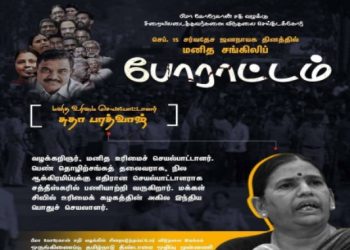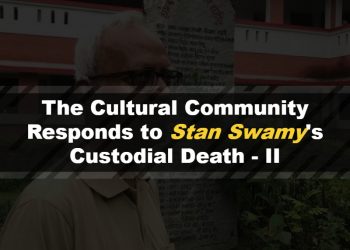
This is all about a small shrine in a cave on a hill known as Baba Budan Giri, after a Muslim saint belonging to the 17th century. The same shrine is also known as Dattatreya Peetha – literally ‘seat’ – is widely used for holy places and shrines; and as Guru Dattatreya Baba Budan Swamy Dargah.The hill shrine is in Chikkamagalur district, an idyllic picturesque region known as the coffee-land of Karnataka. Legend has it that it was Baba Budan who brought the first coffee seeds to this region from Yemen. In the Puranas, the hill is known as ‘Chandra Drona Parvatha’ which is a lovely metaphor, the‘crescent of the Moon’ aptly describing the horse-shoe shape of the hill cocooned in the middle of the Sahyadri Western Ghats. Some distance away is Mullayyana Giri, the tallest peak below the Vindhyas.
For many hundreds of years, Hindus and Muslims have been visiting this shrine, offering prayers to both Baba Budan and Sri Guru Dattatreya. Those who are in distress tie a small piece of cloth into a knot around the iron grills near the shrine, symbolically handing over their distress to Baba who will un-tie it. For hundreds of years, Sajjade Nishin from the family of Shah Khadri, a Muslim priest, has been performing the worship. Every year, the Urs of Baba Budan is held, with all the familiar rituals associated with the Sufi saints. There is not a single record in history of any religious or communal dispute about the shrine. It has been a holy place, especially for the poor, who come here for solace. The rulers of Karnataka recognised the sanctity of the syncretic culture symbolised by the shrine, and they faithfully recorded its name as ‘Guru Dattatreya Baba Budan Swamy Darga’ in the revenue records. The King of Mysore patronised it and the queen of the Nayaka dynasty supported it through grants. In fact, cultural historians like Tarikere Rehamath have, with impeccable evidence, argued that in most regions of Karnataka, especially in North Karnataka and Hyderabad Karnataka , a continuous rich syncretic culture has existed in which Sufi and Hindu traditions have blended themselves in such a way, that even ‘syncretic’ would be an incorrect description. It is ‘The Third way’, embraced by the common people and kept at a distance by the orthodox. The legends around the dargah point to a history of Sufi saints going back to the 11th century A.D.: Dada Hayath and the silsila of his disciples made this one of the oldest centres of Sufism. Such was the power of the syncretic traditions that Baba Hayath and Guru Dattatreya were believed to be the same. A part of this tradition is the worship at dargahs and the graves of the saints. Historians also point out that innumerable shrines and holy places have doubled as Sufi centres as well as shrines of ‘deities’ such as Dattatreya. Kannada scholars are now reconstructing the real history of this pluralistic Karnataka.
Cut to the post-Babri Hindutva scenario. Right-wing groups suddenly discovered that the shrine is a purely Hindu shrine, with the ‘Padukas’ (holy sandals) of Shri Dattatreya and, inside the cave, the seat of Anasuya. Conspiracy theories, drawn from a spurious history, were bandied around to prove historical truth. Stuck with the ‘either-or’, and the ‘we and them’ logic, the right-wing cannot accept the fact that no one has ever disputed that the shrine is also a Hindu shrine. And so began the well-rehearsed protests, Shobhayatras, massive Datta Jayanthis, and also litigation with the Shah Khadri. The right-wing discovered that the Baba Budan Giri controversy was a godsend, and its rhetoric became increasingly violent.
Then a brave and glorious chapter in the history of intellectual and cultural resistance by writers, activists and the left parties in Karnataka began. Under the banner of Komu Souharda Vedike, (Communal Harmony Forum), nearly 200 organisations and every writer and activist joined a pitched battle against communalism. Without the support of any political party, thousands volunteer every year to protect the secular, pluralistic traditions of Karnataka. Many writers, including the present writer, were imprisoned and later officially declared as supporters of Naxalism. The dispute has now reached the Supreme Court which has sought the opinion of the Government of Karnataka. As all governments do, is the government seeking ‘muddat’-time, till the next election?
As I write this, another Muslim has been lynched in Chhattisgarh, two days after the ‘Not in My Name’ protest, and one day after the PM’s feigned anger at the killings.
Are the wounds of modern, communal politics so deep and festering that neither Baba nor Dattatreya can heal hem? After such divisive and bloodthirsty ‘othering’ of our own brothers, what can a small shrine hidden in a cave do to stop the juggernaut of communal nationalism? Just how can we give political strength to the cultural memories of shared faiths, to co-existence and tolerance? The politics of urban-secular protests has run out of steam. Many believe that, in the first place, this politics itself was alienated from the cultural resources of the lived experiences of Hindu and Muslim communities of togetherness; and, as in the case of Baba Budan Giri, of worshipping together. It is these cultural resources which are being destroyed by the politics of lynching. Should we allow people’s memories to be lynched?

Also hear Professor Muzaffar Assadi on the gradual demise of Karnataka’s syncretic culture here.




